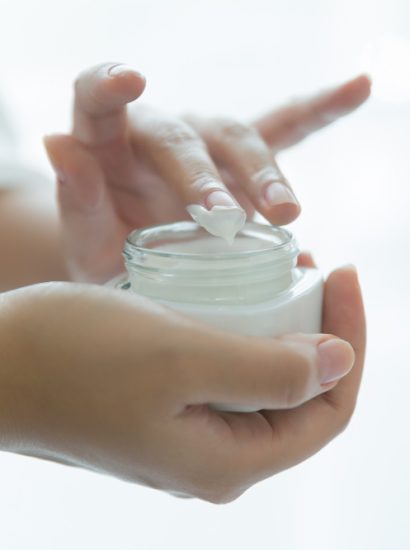Lactic acid has become a staple in modern skincare, offering a balance of effective exfoliation and hydration. Whether you’re looking to improve texture, boost radiance, or manage signs of aging, lactic acid can help achieve smoother, more vibrant skin.
What Is Lactic Acid?
Lactic acid is an alpha-hydroxy acid (AHA), naturally derived from fermented milk and fruits. As a water-soluble humectant, lactic acid attracts hydration into the skin, while its AHA properties gently exfoliate the surface layer.
Unlike harsher AHAs like glycolic acid, lactic acid has a larger molecular structure. This allows it to take its time penetrating the skin, resulting in fewer side effects like irritation or redness—making it ideal for sensitive skin types.
Popular concentrations range from 5% (gentle daily serums) to 10–12% (targeted treatments). Understanding this formulation variety helps you choose the right product for your goals.
Key Benefits of Lactic Acid for the Face
Gentle Exfoliation
Lactic acid loosens bonds between dead skin cells, promoting their gentle removal. This smoothing action improves skin tone and texture without causing significant irritation.
Boosted Radiance
By removing surface buildup, lactic acid reveals fresh, glowing skin beneath. Many users report brighter complexions and a radiant glow within days of starting treatment.
Improved Hydration
As a humectant, lactic acid draws moisture into the skin. This dual role—exfoliation and hydration—makes it exceptional for individuals with both dry and dull skin.
Minimizing Fine Lines & Pigmentation
With consistent use, lactic acid can help fade dark spots, smooth fine lines, and even skin tone. It’s a reliable choice for aging concerns without triggering inflammation.
Enhanced Absorption
By removing the outer dead skin layer, lactic acid optimizes the uptake of other active skincare ingredients like vitamin C, retinoids, and peptides.
Popular Uses & Formulations of Lactic Acid
Daily Serums & Toners (5–8%)
Light daily treatments help maintain smoothness and brightness with minimal irritation. Use AM or PM after cleansing.
Exfoliating Pads (10%)
Pre-soaked disposable pads—like Sunday Riley and The Ordinary—are convenient for controlled exfoliation and cell turnover. Use 2–3 times per week.
Overnight Peels & Masks (10–12%)
These rinse-off or leave-on treatments target deeper hydration and rejuvenation. Best used weekly to boost glow without overuse.
Combination Formulas
Pairing lactic acid with soothing actives (e.g., hyaluronic acid, niacinamide, green tea) offers both exfoliation and barrier support—ideal for sensitive skin.
Prescription-Strength
Dermatologist-formulated lifts, often 14–20%, are available for supervised correction of sun damage, melasma, or acne scarring.
How to Integrate Lactic Acid in Your Routine
Consistent use of lactic acid can transform your skin, but care is key.
Pick the Right Concentration
- First-timers: Start with 5%.
- For build-up & dullness: Consider 8–10%.
- Addressing deeper concerns (aging, discoloration): Use 10–12%, ideally curated by a dermatologist.
Introduce Slowly
Start 2–3 times per week at night. Monitor skin reactions, then increase frequency to nightly use if your skin tolerates it.
Application Steps
- Cleanse with a gentle, pH-balanced cleanser.
- Apply lactic acid serum or pad on clean, dry skin (skip if high-strength mask goes on next).
- Wait 1–2 minutes, then follow with hydrating serums (e.g., hyaluronic acid, niacinamide).
- Moisturize to seal hydration.
- If used in AM, always finish with broad-spectrum SPF 30+.
Partner Actives
- Compatible with: Hyaluronic acid, niacinamide, vitamin C, peptides—enhances results.
- Use with caution: Retinoids or other AHAs/BHAs. Alternate nights or lower strengths to avoid irritation.
Who Should Use Lactic Acid?
Nearly everyone can benefit, but certain groups will see standout results:
Dry & Dehydrated Skin
Lactic acid offers hydration and gentle exfoliation for a softer, smoother complexion.
Sensitive or Rosacea-Prone Skin
Its mild nature makes it safer than stronger AHAs, with reduced risk of flushing or irritation.
Dull, Uneven Complexion
Ideal for brightening dull skin, treating early signs of aging, and improving tone.
Combination Skin Types
Works well across different zones—balancing hydration and surface renewal.
Acne-Prone Skin
Supporting gentle exfoliation, lactic acid can help reduce clogged pores, especially when paired with benzoyl peroxide or retinoids.
Potential Risks & How to Avoid Them
Despite its mild reputation, lactic acid requires proper use to prevent issues.
Skin Irritation
Possible signs: redness, stinging, burning. Mitigation: start with a lower dose, patch test, and reduce use frequency.
Sun Sensitivity
AHAs thin the skin’s surface, increasing UV vulnerability. Daily SPF is non-negotiable.
Over-Exfoliation
Combining lactic acid with other acids/retinoids without spacing can damage the skin barrier. Adopt an alternate-night schedule.
Tips to Maximize Results
Don’t Skip Sunscreen
SPF 30+ every day keeps your renewed skin safe and promotes long-term benefits.
Build Up Over Time
Start weekly and gradually move to most nights over 4–6 weeks, depending on tolerance.
Pair with Soothers
Finish your routine with hydration-rich creams and soothing oils (squalane, ceramides, or rosehip oil).
Watch Environmental Stressors
Outdoor pollution, heat, or over-washing can intensify dryness—adjust lactic acid frequency accordingly.
Monitor with Seasonal Changes
Skin moisture and tolerance vary with seasons. Scale usage up in fall-winter and ease back during hot, humid months or when inflamed.
Conclusion
Lactic acid is a versatile, gentle powerhouse for facial skincare. It smooths, brightens, hydrates—and when used correctly, unlocks a healthier, glowing complexion. From choosing the right concentration to integrating it into your routine safely, this guide helps you confidently harness lactic acid’s benefits without irritation.
FAQs
1. Can I use lactic acid every night?
Yes—once your skin acclimates. Start with 2–3 nights a week, then progress to nightly use if there’s no irritation. Always follow with moisturizer and sunscreen.
2. Is lactic acid better than glycolic acid?
For sensitive skin, yes. Lactic acid is gentler due to its larger molecular size. Glycolic penetrates more deeply and works faster, but is more likely to cause irritation.
3. Can I layer lactic acid with retinol?
Yes, but alternate nights. For example, lactic acid on Monday, retinol on Tuesday. If used together, use a low concentration and monitor skin for redness or dryness.
4. Will lactic acid remove dark spots?
Gradually. It helps fade pigmentation and evens tone through gentle exfoliation. Visible improvement often appears within 4–8 weeks of consistent use.
5. Is lactic acid safe during pregnancy?
Generally, yes. Lactic acid in low-to-moderate OTC concentrations (≤10%) is considered safe. Always check with your OB-GYN or dermatologist before starting any active treatment during pregnancy.
Also read: What Is Urea Cream Used For? Benefits and Applications Explained




